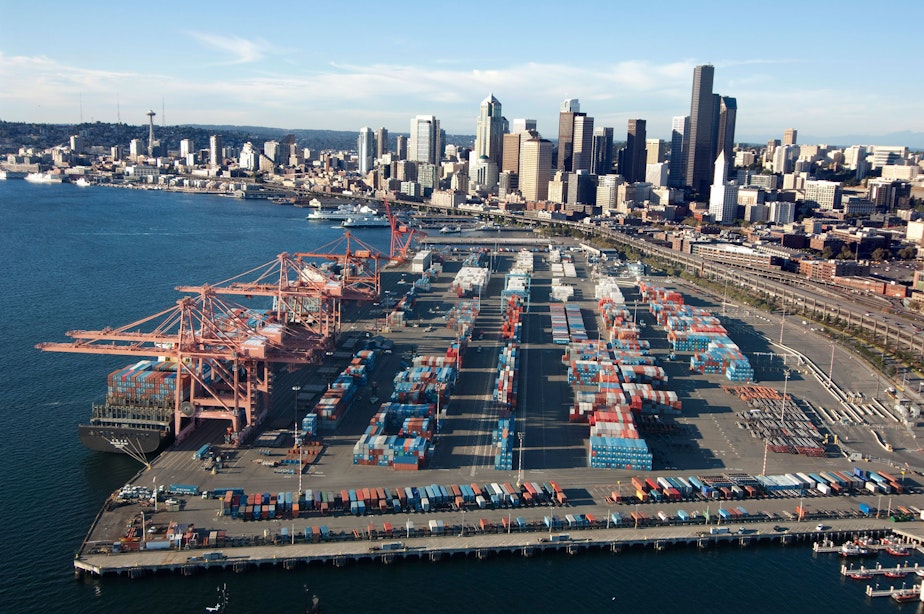Over Here, Mega-Ships! Seattle Angles For Big Business

The Port of Seattle is getting $20 million dollars in federal investment to help the Port prepare Terminal 46 for the arrival of the next wave of mega-ships.
Cargo shippers around the world are hunting for cost-savings, and that hunt has led them to form alliances and share the use of ever-larger ships. The latest will be three and a half football fields long and so wide they require a larger size of crane to unload them.
The challenge does not end with unloading. Ports that welcome these ships will also need the capacity to move the containers into the road and rail network. And the shipping alliances being formed will have a lot of power.
Ports on the West Coast are scrambling to attract this business because the alliances are likely to want to simplify: They will no longer stop at every port in the West.
"They're likely to probably pick two or three places to stop with incredibly large ships," said Bill Bryant, a commissioner at the Port of Seattle.
Sponsored
"L.A.-Long Beach is going to be one. The question is, is the second Puget Sound or British Columbia?"
The federal funds will improve Terminal 46 so that two mega-ships can unload at once. However just building lengthened and buttressed docks will not be enough. Shippers are also interested in how cargo moves out of ports.
In recent years the Port of Vancouver has proved attractive in part because of government spending on roads and rails.
The climate is different in Washington state, however. Bryant said important highway and rail projects keep getting delayed. In addition to delays at the federal level, a political impasse at the state capitol has meant a transportation funding package has not gone through.
The Port's challenges do not end there. This summer it closed down Terminal 5, the container terminal on the West Seattle side of Elliott Bay. Getting it ready for the mega ships is expected to take $200 million and years of work.
